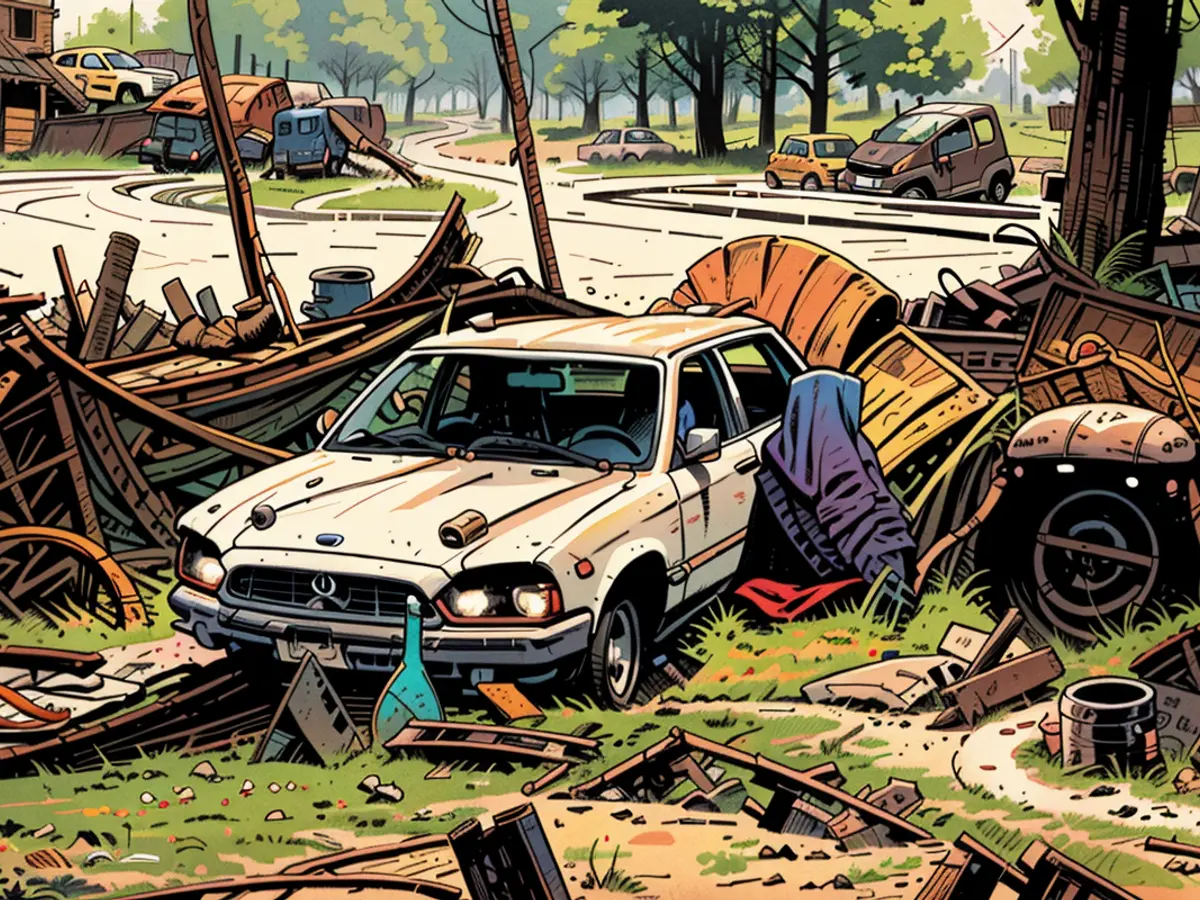Battle against "Park Fire" in California complicated again by wind and heat
The "Park Fire" is the seventh largest forest fire in California, recorded. Bill See from the California Fire Department (Cal Fire) reported that "intensified winds in the upper canyons" are complicating the situation. By Sunday afternoon (local time), the flames had destroyed over 144,500 hectares of land according to his statements.
On Saturday, the fire department reported modest progress in fighting the flames. Twelve percent of the fire was reportedly under control. However, wind and heat picked up again on Sunday, contributing to the further spread of the "Park Fire".
No fatalities have been reported yet, according to Cal Fire representative See. Sixty-seven buildings were damaged or destroyed, he added.
Approximately 4200 people have been displaced from their homes in the Butte County administrative district due to the fire. The flames have primarily affected a largely uninhabited, mountainous area about 145 kilometers north of California's capital, Sacramento.
Fire chief Brunton spoke of challenging conditions for firefighters, including the rocky terrain. "We are beginning to observe increased fire activity," he said. Some 4000 firefighters were battling the fire, supported by aircraft and bulldozers.
The "Park Fire" ignited on a Wednesday near Chico in Butte County. Within hours, the flames destroyed a vast area in Butte County and the neighboring Tehama County. A 42-year-old suspect was arrested on Thursday for pushing a burning car into a ravine and thus igniting the fire.
Chico is only about 24 kilometers from the city of Paradise. The devastating fire with 85 fatalities in 2018 is known as the deadliest fire in California's history.
California is now experiencing an early start to what could be an especially intense forest fire season. Experts see climate change as the cause of extreme weather conditions, which in turn lead to more frequent and more intense forest fires.
Other parts of North America are also currently suffering from forest fires. In Oregon, the so-called Durkee Fire has burned almost 290,000 hectares since it broke out at the beginning of the month due to a lightning strike. The fire is reportedly about halfway contained, according to the agency responsible for forest fire control in the state on Sunday.
In Canada, authorities reported that the devastating forest fires around the city of Jasper are now under control. The fires, which were triggered by lightning strikes last Monday, are the most destructive in the Jasper National Park in a century. Thirty-two thousand hectares were destroyed.
In the 25,000-resident city of Jasper in the province of Alberta, about 30 percent of the buildings were leveled. All residents and tourists accommodated in Jasper were evacuated. Until further notice, no resident is allowed to return. Parks Canada, the government agency responsible for managing national parks, announced that this would only be possible when the fire danger "significantly decreases".
- Despite the efforts of 4000 firefighters, intensified winds in the upper canyons, as mentioned by Bill See from Cal Fire, are making the 'Park Fire' situation more complex in California.
- The 'Park Fire' in California, the seventh largest forest fire ever recorded, had destroyed over 144,500 hectares of land by Sunday afternoon.
- In Canada, the destructive forest fires around the city of Jasper, triggered by lightning strikes, are now under control, according to the authorities.
- In Oregon, the Durkee Fire, which started due to a lightning strike at the beginning of the month, has burned almost 290,000 hectares.
- The 'Park Fire' ignited in Butte County, California, near Chico, and within hours, it destroyed a vast area in both Butte County and Tehama County.
- On Sunday, the agency responsible for forest fire control in Oregon reported that the Durkee Fire is about halfway contained.
- The 'Park Fire' in California is contributing to an early start to what could be an especially intense forest fire season, due to the effects of climate change and extreme weather conditions.







